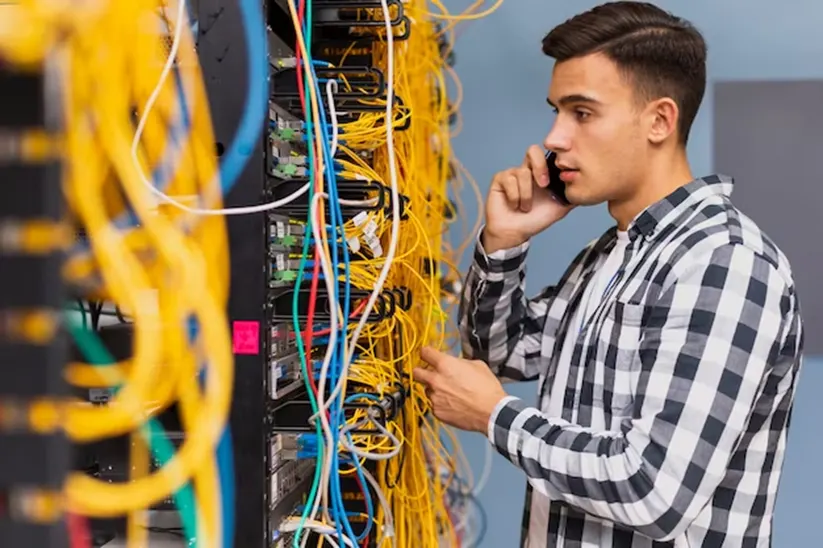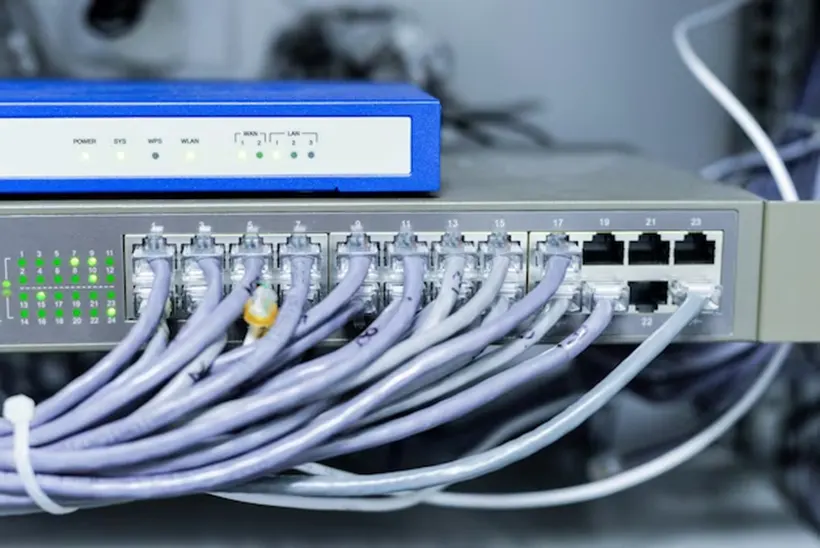Modern connectivity is backed by a cable system’s infrastructure. Therefore, the critical aspect of the communication system is a structured cable system. When striving to traverse through the maze of electronic sceneries, the realization of unique environments gives rise to individual wiring needs.
The type of system used can range from a simple home entertainment cabling system to a complex corporate network or an industrial setting. Simultaneously, the development of ethernet cables is specifically to enhance networking, while fiber optics networks provide high-speed data transmission.
In this article, we will dig into the complexities of choosing the correct cable system, helping you through the essential aspects that pave the road for an optimized connection infrastructure.

Understanding your Environment
The first step in choosing the right cable system is to understand your surroundings. Crucial elements include the geographic dimensions, possible sources of interference, equipment specs, and scalability needs.
A home entertainment system would use coaxial connections or power cord for audio and video transmissions, whereas an industrial facility prefers fiber optic systems for long-distance data transfer.
By examining these subtleties, one can ensure that the selected cable system will satisfy the environment’s current requirements and foresee future technological improvements.

Types of Cable Systems
1. Ethernet Cables
The foundation of networking, Ethernet cables, are available in several varieties, such as Cat5e, Cat6, and Cat7, each designed to meet specific data speed needs. Standard applications are best served by Cat5e, performance is improved by Cat6, and high-speed conditions are best served by Cat7.
Comprehending the unique attributes of every classification is vital in order to maximize network effectiveness. Ethernet connections are perfect for home and business settings because they use twisted pairs of copper or aluminum wires to transport data reliably.
A careful selection based on bandwidth needs ensures seamless connectivity, supporting applications from everyday internet browsing to demanding data transfers.

2. Coaxial Cables
In many applications, most notably home entertainment systems, coaxial cables are the pivot for delivering audio and visual signals. These cables comprise an exterior insulating layer, a metallic shield, insulation, and a center conductor that work together to build a strong structure for signal integrity.
Coaxial cables accommodate a range of signal transmission lengths and come in various thicknesses. Over longer distances, thicker cables provide better signal quality. Coaxial cables are essential for providing clear audiovisuals because of their tolerance to electromagnetic interference, which makes them a mainstay in multimedia systems.
3. Fiber Optic Cables
Fiber optic cables can be regarded as the ultimate stage in the evolution of data transmission technology based on transmitting data using glass or plastic strings. These cables are renowned for high data transfer rates and immunity to electromagnetic interference. When it comes to their installation, employing helical installation equipment ensures precision and efficiency.
In contrast to fiber optic cables, copper cables work better at short distances, but their efficiency depreciates with time. They are essential in areas like telecommunications, data centers, and industry. Fiber optics are incomparable in terms of speed and reliability.
Hence, they are important in facilitating the seamless transmission of vast amounts of data in a very short time and with ultimate security for optimum performance.
4. Power Cables
In many situations, power cables—which are frequently undervalued—are essential for providing electricity to equipment. Variations in voltage, current capacity, and power needs are considered while designing these cables.
Power distribution is made safe and effective whether in a house, business, or industrial setting by choosing the appropriate power cord. For steady power transmission against any electrical risks, it is essential to match the specifications of the cable with the requirements of the connected equipment.
Electrical system dependability is increased when power line characteristics are carefully considered.
Factors to Consider While Selecting the Right Cable System
1. Bandwidth Requirements
Bandwidth requirements are a key determinant in selecting the appropriate cable system, directly influencing the efficiency of data transmission. Bandwidth stands for a network’s capacity to channel data in a given time period.
Complications of capacity limitations may arise in cases where high-performance data transferring is requested. Planning and evaluating the bandwidth requirements of your environment will ensure that any cables you choose can handle the data traffic.
Also, they do not put up bottlenecks or are the source of the issues leading to the underperformance of the overall system.
2. Distance
A crucial consideration in the selection of cables is the distance over which they are deployed since this affects the quality and intensity of the signal. Signal deterioration may occur when cables are stretched beyond their intended length because different cable types have different transmission capacities.
It is critical to comprehend the space requirements of your surroundings. For example, since fiber optic cables are immune to signal loss, they perform very well in long-distance transmissions and are, therefore, perfect for linking places that are far apart.
Reliable and effective connectivity is ensured by assessing and aligning the spatial layout with the cable’s transmission capacity.
3. Interference and Environmental Conditions
The performance of cables is greatly impacted by interference and external circumstances. Sources, including fluorescent lights, equipment, and electrical gadgets, may introduce electromagnetic interference.
Selecting cables with the right level of shielding reduces these interruptions. Environmental factors, such as moisture content and temperature, also matter. For instance, cables with improved weather resistance could be needed for exterior installations.
In order to choose cables that preserve signal integrity and dependable operation in a range of circumstances, it is helpful to evaluate sources of interference and environmental elements.
Bottomline
Choosing the correct cabling system is very significant to have hassle-free use of the network or equipment. You can select solutions that comply with your needs and budget by getting familiar with the environment, considering different cable types, and doing specific evaluations.
Allocate the time it takes to do appropriate research and consult with relevant experts to develop a proper cable structure that will withstand time and deliver effectively in your environment.

Jessi is the creative mind behind The Coffee Mom, a popular blog that combines parenting advice, travel tips, and a love for all things Disney. As a trusted Disney influencer and passionate storyteller, Jessi’s authentic insights and relatable content resonate with readers worldwide.
